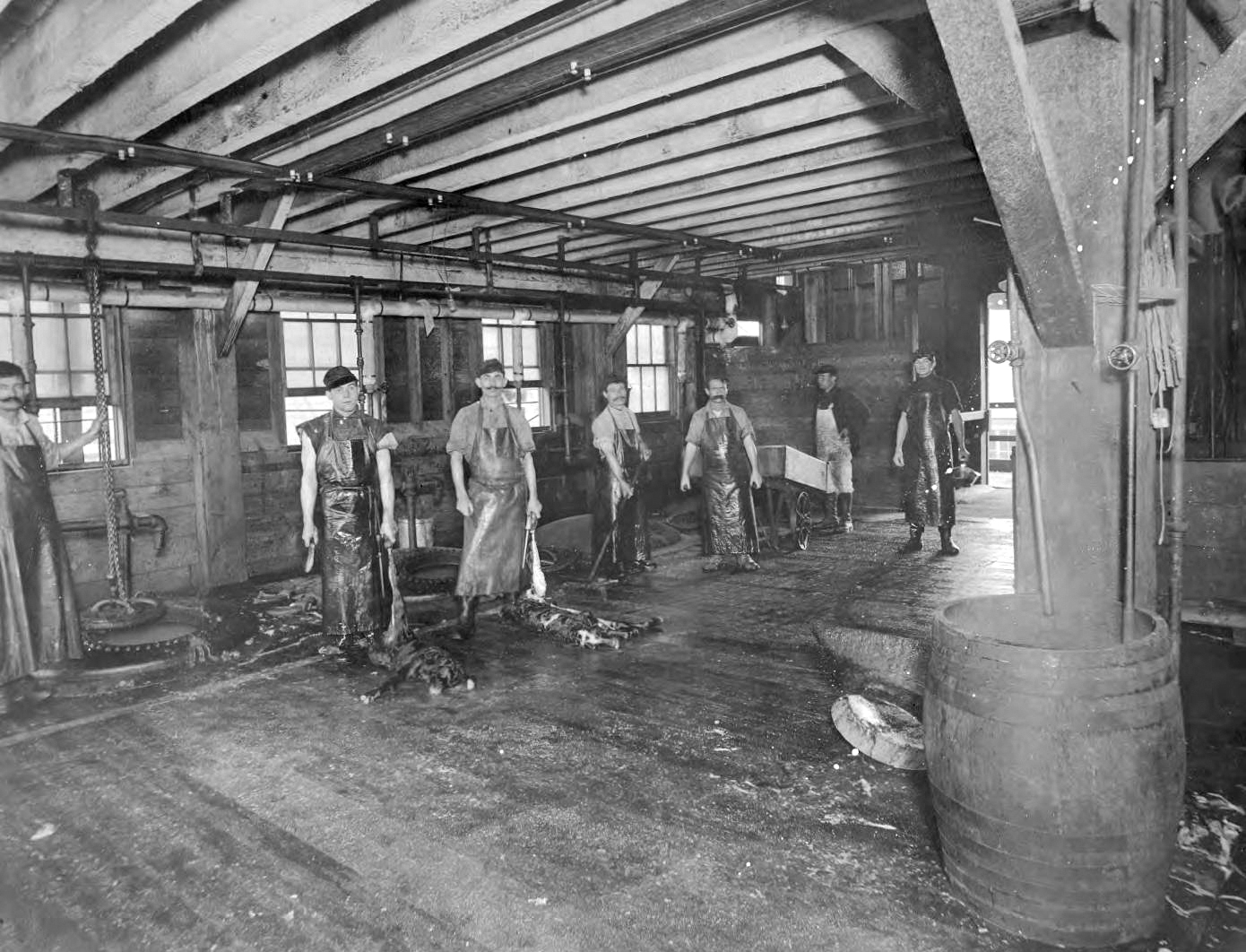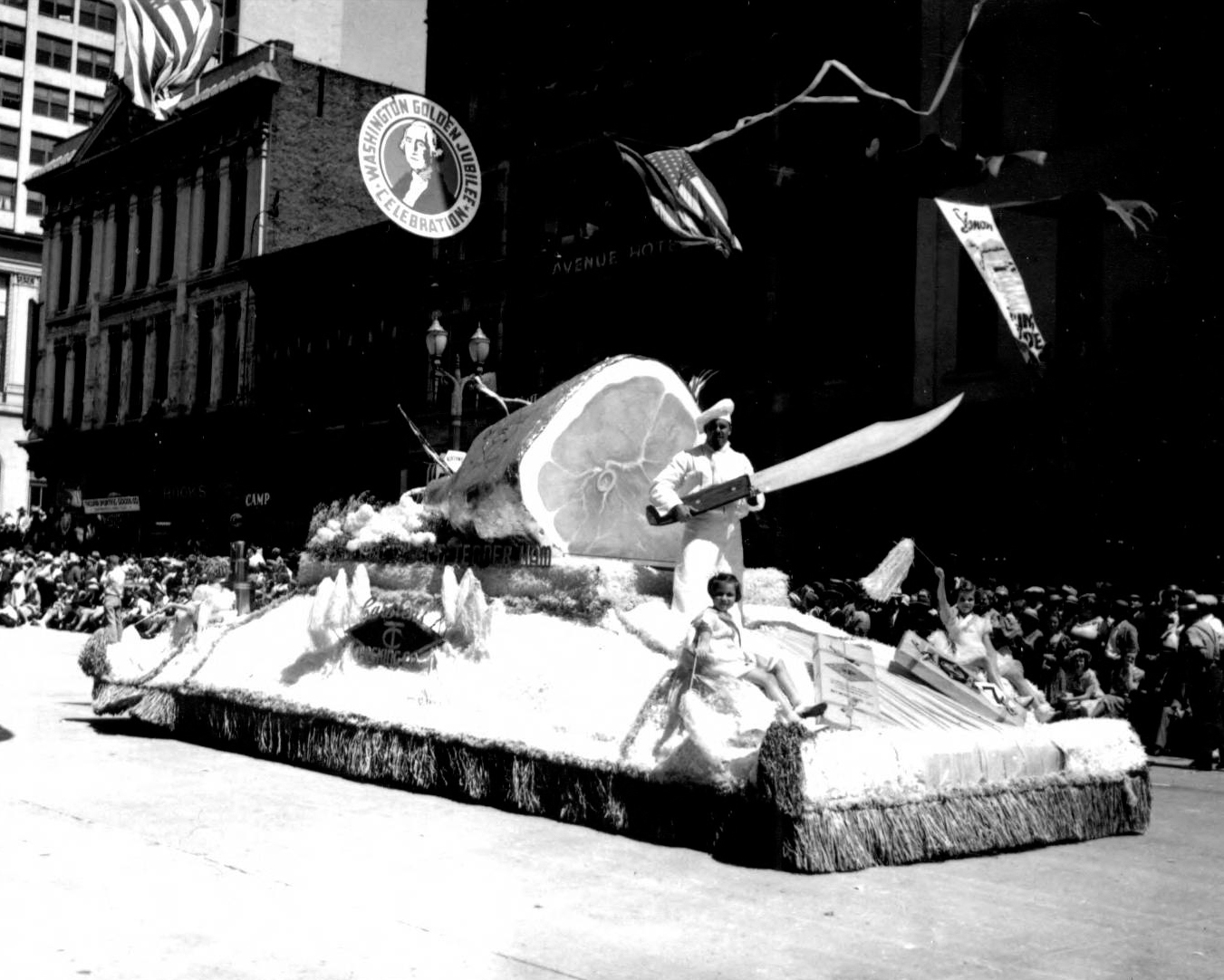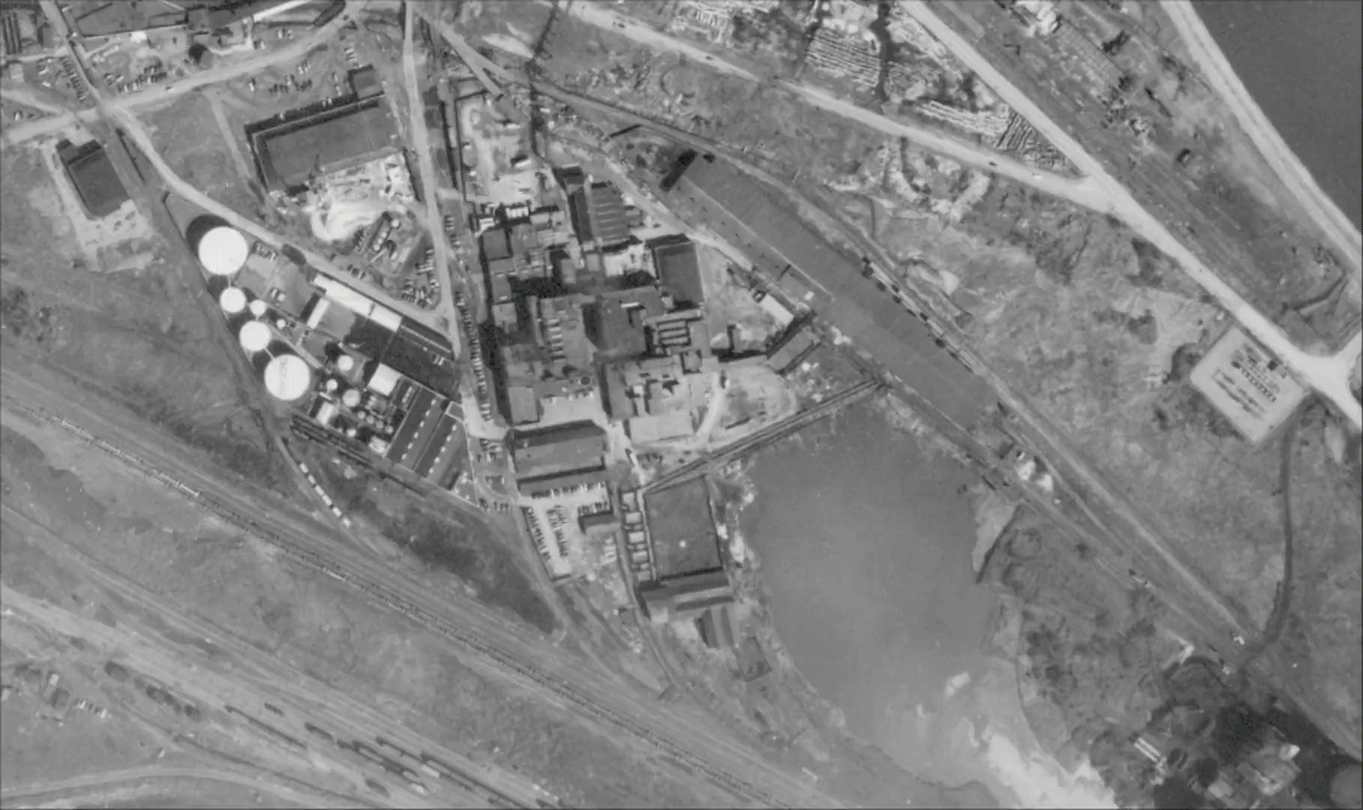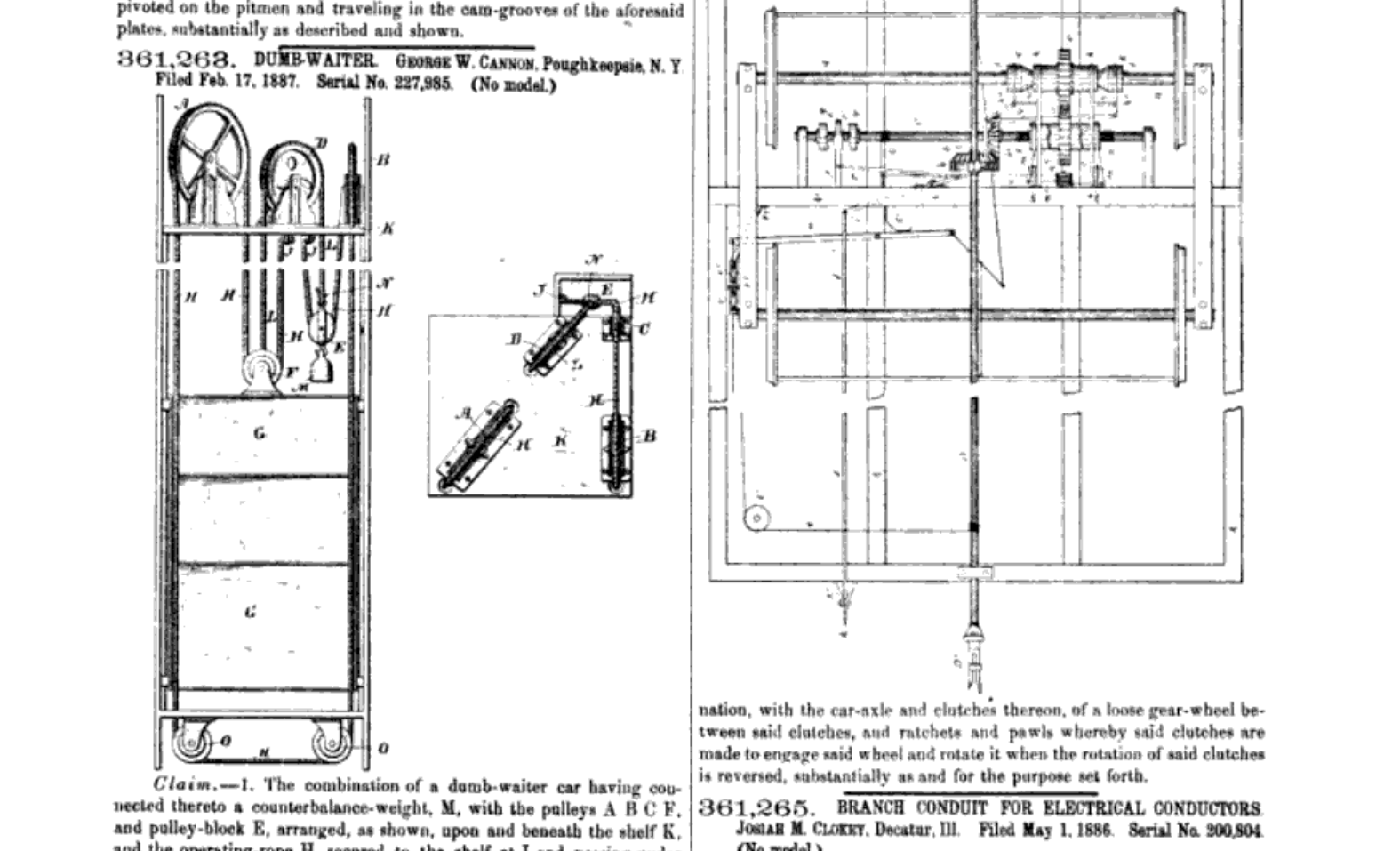Legacy

Perhaps dogged by being driven out of Seattle due to creating noxious and unsanitary conditions, Carstens appears obsessed with broadcasting the advanced technology and pristine conditions of his facilities, despite clear evidence to the contrary. One of the best glimpses inside the facility that we have is a 1909 “Christmas Booklet”. While the recipient’s of this grisly holiday present are unknown, affectless workers can be seen in dim, expansive wooden caverns in the second floor glue factory and wearing long, wet leather aprons in the Inedible Tank Rendering Room.1
✺

Possibly the most effective piece of marketing that Carstens created and likely what most Tacoma residents would associate with them over the physical presence on the Tideflats was their annual participation in the Daffodil parade, where men in butcher’s whites wielded comically oversized carving knives in front of huge, paper mache hams on floats covered in daffodils and frilled trim.2
✺

Despite Carstens’ protests, the facility affected much more than the “perfume” of the Tideflats, as he put it.3 The company town of the turn of the century gradually turned into a community known as the Hollywood-on-the-Tideflats, a cruel, ironic name for people forced to live in simple houseboats and shacks due to the great depression. In one of the more blatant displays of WWII opportunism, the Tacoma Fire Department collaborated with the US Coast Guard to evict and burn the property of the entire community, just two days after the forced removal of Tacoma’s Japanese American community.4
In 1987, the Environmental Protection Agency declared the area a superfund site, identifying carcinogenic levels of heavy metals and organic compounds. Waste materials in soil composition samples ranged from coal tar, cyanide, shredded car interiors, animal fat and animal byproducts. A combination of soil excavation, stabilization and groundwater extraction was recommended for areas exceeding the 6 to 10 lifetime span cancer risk designation.5 This survey was completed only 17 years before the establishment of the Detention Center.
✺
Conclusion
While there are overlapping themes of immigration, captivity and labor abuse that connect the Carstens Packing Company and the Northwest Detention Center, the most significant is distance. Both institutions required a location close enough to the city to take advantage of its tax incentives, unorganized labor and access to centralized trade routes, while being far enough from view to keep residents forgetful of their obvious environmental and ethical impacts. Both understood the power of inserting themselves in a developing area somewhat removed from public scrutiny.

The psychology of physical remove in the built environment acts a bit like a dumbwaiter. This invention allowed goods to be pulled up from the basements and kitchens to the dining rooms and bedrooms of nineteenth century mansions. The simple contraption allowed the owner to consume without seeing the human cost of the product, and recognize their complicity in the abuse that made those resources possible. This is the difference between knowing something exists in concept and comprehending these places in person, thereby understanding your relationship to it.
✺
Thank you for your time.
-
“Carstens Packing Company Photograph Album - Archives West.” 2022. July 22, 2022. https://archiveswest.orbiscascade.org/ark:/80444/xv98272. ↩
-
“D8652-33 - Northwest ORCA.” n.d. Accessed April 1, 2024. https://northwestroom.tacomalibrary.org/index.php/d8652-33. ↩
-
The Tacoma Daily Ledger. September 19, 1909, page 25. ↩
-
“Tacoma’s Hooverville: Hollywood on the Tideflats.” n.d. Accessed April 1, 2024. https://www.historylink.org/File/22604. ↩
-
“EPA Superfund Record of Decision.” REDACTED Record of Decision for Commencement Bay Nearshore/Tideflats Superfund Site, Operable Unit 19; Pierce County, Washington.” Marshall, Leland. December 30, 1987. https://semspub.epa.gov/work/10/100051437.pdf ↩